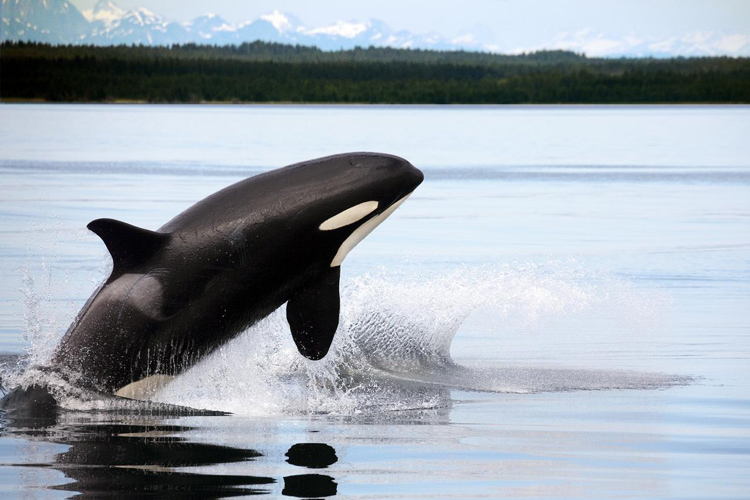The killer whale, also known as orca, is the largest member of the dolphin family, and one of the most ferocious marine predators on the planet.
Interestingly, the name "killer whale" is a mistranslation of the Spanish designation "asesina de ballenas," which literally means "whale killer." So, these ocean creatures are not whales - they are whale killers.Scientifically named Orcinus orca, the killer whale is, in fact, a savage predator with sophisticated behaviors. They're often spotted working as a highly coordinated team and rarely lose a battle.
Killer whales are easy to identify. They feature a big black back, with medium-sized white patches above and behind the eyes, and then a big white chest that runs from head to tail.
Scientists believe that killer whales don't smell. But they see and hear very well. They communicate through sounds, and they've developed their own unique "dialects" or system of calls.
Although they never truly enter a deep sleep-like state, orcas rest half of their brains alternately. When they close their left eye, their left side of the brain is shut down, and vice versa.
However, their coloration may differ from pod to pod so that they can hide and surprise their prey in more or less transparent waters.

Thanks to their thick layer of fat under their ski, orcas can be found in all oceans of the world, in a broad range of marine ecosystems, in cold, cool and warm waters.
Killer whales can be dangerous to their prey. They are armed with a set of between 40 and 55 brutal teeth that will capture, rip and tear victims in a matter of seconds.
These powerful creatures of the seas feed on fish, octopuses, stingrays, seabirds, turtles, marine mammals like dolphins and seals, and even sharks. They're apex predators - they're on top of the food chain.
Orcas are highly social marine mammals and live in pods. Young killer whales learn to hunt prey by watching and learning the basic techniques through their mothers.
There are five ecotypes of killer whales in the Northern Hemisphere: resident orcas, Bigg's orcas, offshore orcas, North Atlantic Type 1, and North Atlantic Type 13.
In the Southern Hemisphere, there are four different types of killer whales: Type A, Type B, Type C, and Type D.
Marine mammals come to the surface to breathe, and exhale a spout of gas and water into the air, just like a human snorkeler. The larger the animal, the higher the mist rises.
A male killer whale can reach 32 feet (9.6 meters) in length, and weigh up to nine tons. On average, they reach sexual maturity around 21 and live between 29 and 60 years.

Female orcas will reach 23 feet (8.2 meters) and weigh up to eight tons. Their fertility peak comes around 20, and they live between 50 and 80 years. The gestation period of an orca is 17 months.
One of the oldest known orcas is "Granny." She may have lived up to 105 years, even though some researchers think that her age at the time of death was between 65 and 85.
Their average swimming speed is three-to-four miles per hour (five-to-6.4 km/h), but they can accelerate up to 30 miles per hour (48 km/h).
An orca can kill a shark by flipping it upside down and putting the opponent in a paralyzed state called "tonic immobility." The dorsal fin of a male killer whale can reach six feet.
According to the oceanographers, there are around 50,000 killer whales in the oceans of the world. The majority lives in the Antarctic, but they can also be found in the tropical and northeast Pacific, and in the Norwegian Sea.
When held in captivity, orcas develop unusual behaviors. Over 90 percent of all killer whales in captivity have not lived past the age of 25.
Since they became marine life park attractions, these elegantly large animals were responsible for the death of a handful of trainers. However, there are no known incidents of a wild orca attacking or killing a human being.
In Native American culture, orcas are the symbol of strength and power, and they're seen as the protector of humankind.


